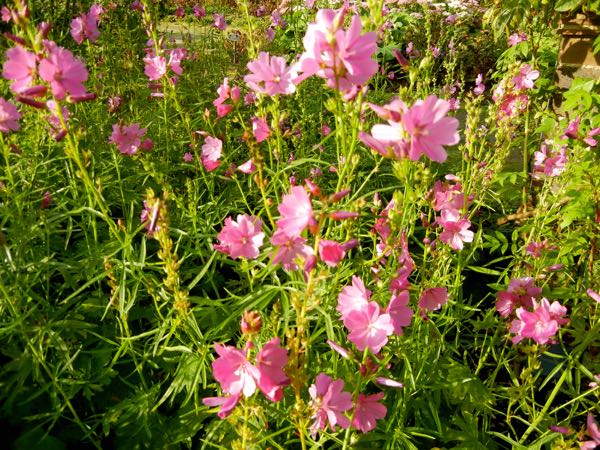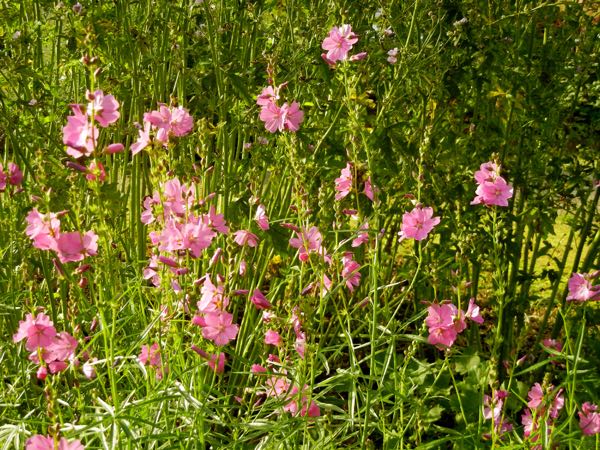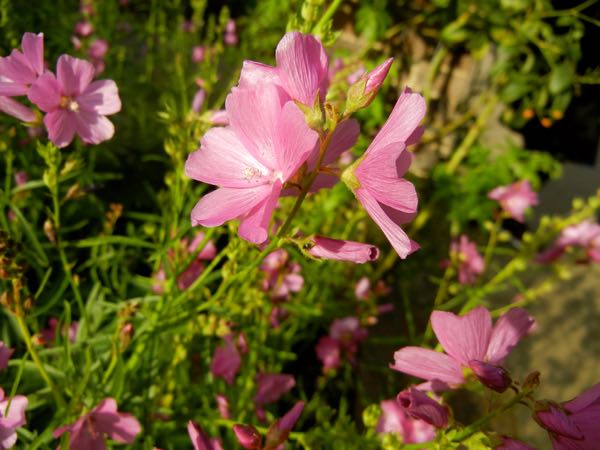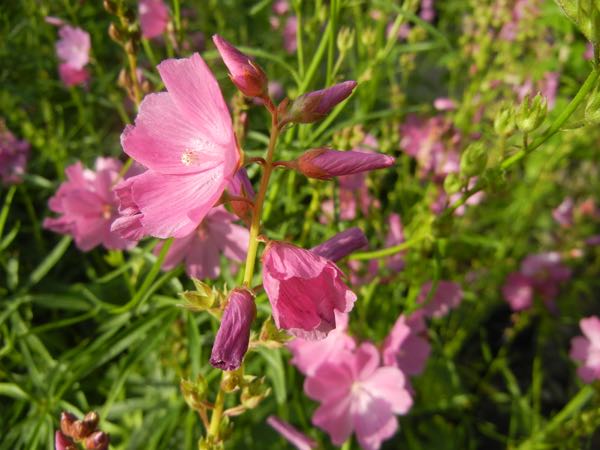Sidalcea malviflora ‘Rose Queen’: A Delightful Perennial of Graceful Beauty
Sidalcea malviflora ‘Rose Queen’ commonly known as Prairie Mallow, Greek Mallow, Dwarf Checkermallow, or Dwarf Checkerbloom, is a captivating perennial plant that brings a touch of elegance to gardens and landscapes. With its native origins in North America, particularly along the west coast and Baja California, this member of the Malvaceae family showcases a profusion of charming pink flowers on tall stems. Let’s explore the enchanting qualities of Sidalcea malviflora ‘Rose Queen’ and learn how to cultivate and appreciate its unique attributes.
Plant Description:
Sidalcea malviflora ‘Rose Queen’ is a herbaceous perennial that emerges from a woody rhizome. Growing to an average height of 60cm or 2ft, this delightful plant stands proudly without requiring additional support. The leaves of ‘Rose Queen’ display intriguing variations in shape, adding to its visual appeal. However, it is the show-stopping pink flowers that truly steal the spotlight. These blossoms appear in late summer, adorning the plant with their radiant beauty.
Each flower boasts five delicate petals, creating a charming display reminiscent of a miniature hollyhock. Deadheading the spent flowers not only maintains the plant’s aesthetic appeal but also promotes a prolonged flowering season. The flowers of Sidalcea malviflora ‘Rose Queen’ open in the morning and gracefully close as night falls, adding an enchanting touch to the garden.

How to grow Sidalcea malviflora ‘Rose Queen’:
Sidalcea malviflora ‘Rose Queen’ thrives when provided with the appropriate growing conditions:
Sunlight and Soil: Choose a location that receives ample sunlight or partial shade to ensure optimal growth and abundant blooms. When it comes to soil, ‘Rose Queen’ is versatile and adapts well to most types. However, it prefers soil that is moist but well-drained, avoiding excessive waterlogging.
Pruning and Winter Care: After the flowering period is over, it is beneficial to cut back the plant hard. This encourages fresh growth and helps maintain its compact form. During winter, providing a protective layer of mulch is essential, as Sidalcea malviflora ‘Rose Queen’ is not fond of excessive winter moisture. The mulch acts as insulation, safeguarding the plant’s roots from potential damage.
Wildlife Attraction: Sidalcea malviflora ‘Rose Queen’ is not only a garden delight but also a magnet for beneficial wildlife. Bees, birds, and butterflies are drawn to its captivating flowers, enhancing the ecological value of your garden. Additionally, ‘Rose Queen’ demonstrates remarkable resilience, as it can tolerate deer browsing without succumbing to damage.
Propagation and Potential Pests: Propagating Sidalcea malviflora ‘Rose Queen’ can be achieved through seed sowing. To enhance germination, soak the seeds in warm water for several hours before planting. While this perennial is generally disease-free, it is prudent to keep an eye out for potential threats like the Japanese beetle, which may occasionally affect its health and appearance.
Distinctive Qualities and Advantages:
Sidalcea malviflora ‘Rose Queen’ shares similarities with its taller cousin, the hollyhock, but distinguishes itself with several advantages:
Low Maintenance: ‘Rose Queen’ offers a more trouble-free gardening experience compared to hollyhocks. Its compact size and self-restraint in self-seeding make it easier to manage within the garden.
Graceful Presence: With its slender stems and profusion of dainty pink flowers, Sidalcea malviflora ‘Rose Queen’ brings a sense of grace and delicacy to any garden or landscape. Its tall stems rise above the foliage, showcasing a profusion of dainty pink flowers that add a touch of elegance and charm to the surroundings. Whether planted in borders, cottage gardens, or mixed perennial beds, ‘Rose Queen’ creates a visually captivating scene that is sure to impress.
Versatile Uses: Due to its compact size and beautiful blooms, Sidalcea malviflora ‘Rose Queen’ offers versatile uses in garden design. It can be planted as a focal point in small garden spaces or used as an accent plant along pathways or in container gardens. Its delightful presence also makes it an excellent choice for cut flower arrangements, allowing you to bring its beauty indoors and enjoy its enchanting blooms up close.
Historical Significance:
Beyond its aesthetic appeal, Sidalcea malviflora ‘Rose Queen’ holds historical and cultural significance. Native American tribes used various parts of the plant for medicinal purposes, as well as in basket weaving and the creation of arrows. The flowers were valued for their fragrant qualities, and the plant’s oils were distilled for use in perfumes, showcasing its diverse uses throughout history.
Sidalcea malviflora ‘Rose Queen’ is a captivating perennial plant that offers much more than meets the eye. With its native North American origins, stunning pink flowers, and versatile nature, it adds beauty and elegance to any garden or landscape.
Its low-maintenance characteristics, wildlife attraction, and historical significance make it a cherished addition to gardens of all sizes and styles. By cultivating Sidalcea malviflora ‘Rose Queen,’ you can experience the joy of its graceful presence and enjoy the delightful ambiance it brings to your outdoor space.






